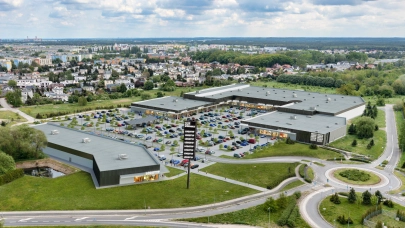
The rampant growth in rents across the logistics sector continues amid a broader recovery in markets as the impacts of the COVID-19 pandemic begin to wane, according to Cushman & Wakefield’s latest DNA of Real Estate research for Q3 2021.
Prime European logistics rents grew on average by 5.2% over the past 12 months, the fastest year-on-year rate in over two decades. The increase reflects the continued demand for best in class space in the top locations as demand outstrips a reducing supply of prime buildings in many markets. Of the major European markets tracked by Cushman & Wakefield, the UK saw the strongest year-on-year increase at 7.3%, followed by the Central & Eastern Europe (CEE) region at 4.4%. At a city level, Prague (+25.6%), London (+14.5%) and Bristol (+13.3%) saw the biggest increases.
Yields fell 16bps over the quarter to 4.56%. Yields are now 68 bps lower compared with the same period a year ago, the strongest fall in recent years, though still short of the record 112 bps reduction in 2006. The gap between logistics yields and other use types narrowed to their lowest level on record – just 21bps above high street retail yields and 39bps for offices. Until Q3 2020, the gap had always been above 100bps.
Nigel Almond, Head of Data & Analytics, EMEA at Cushman & Wakefield, said: “The narrowing of yields between logistics and other asset classes, in particular retail, underscores the clear divide in fortunes between these sectors over the last few years which has accelerated further due to the pandemic. Even allowing for that, logistics remains an attractive proposition for investors, with the prospect for rental growth across most logistics markets, a low interest rate environment, and yields expected to compress further into 2022.”
With workers increasingly returning to the office following restrictions over the last 18 months, the office sector is witnessing green shoots of recovery. Modern offices offering better ventilation and flexibility to adapt use to help retain and attract staff are starting to see a return to headline rental growth. On average, prime office rents rose by a further 0.5% over the quarter, following an increase of 0.3% in Q2 and 0.1% in Q1. This pushed annual growth back into positive territory for the first time since the pandemic started to bite in Q2 2020, with rents now 0.3% higher year-on-year. Positively, no markets registered a fall in rents over the quarter.
Growth is supported by increases in the Nordics (+2.5% y-o-y) and Germany (+2.3% y-o-y). Although some markets continue to see falls on an annual basis, with more markets now posting rental growth Cushman & Wakefield expects that pattern to shift as evidenced by quarterly increases in London’s City (+5.4%) and West End (+2.4%) markets over the third quarter.
Office yields continue to compress, albeit at a modest pace, with the European prime yield averaging a 3bp reduction over the quarter to a new record low of 4.16%. Excluding the UK, prime office yields now average 3.94%, having fallen below the 4% mark for the first time on record in Q2 2021. With an increasing number of markets forecast to grow as demand for best-in-class office space improves, yields are expected to shrink further over the next 12 months.
In contrast, prime retail rents continue to fall, down 1.1% over the quarter and by 6.1% year-on-year. Twelve out of 42 markets reported falling rents in the third quarter, with Barcelona, Bristol, Leeds, Madrid and The Hague all posting quarter-on-quarter falls of 5% or more on a quarterly basis. Although the outlook remains uncertain, there are some signs of optimism. Compared with previous quarters, the number of prime markets expecting a fall in rents over the next twelve months has reduced, with a handful of markets now expecting a modest increase.
At the same time, prime European high street yields stabilised over the quarter, averaging 4.35%. Modest compression in Germany and the CEE was offset by flat or a marginal rise in yields elsewhere in Europe, notably in Belgium, Ireland and the Netherlands.
Nigel Almond added: “In some markets we are starting to see a modest reversal of recent outward yield movements as investors’ sentiment has improved relative to a more negative outlook in the wake of the pandemic. But with yields edging out across some markets it is clear the future path for retail remains uncertain with caution remaining the watchword.”



